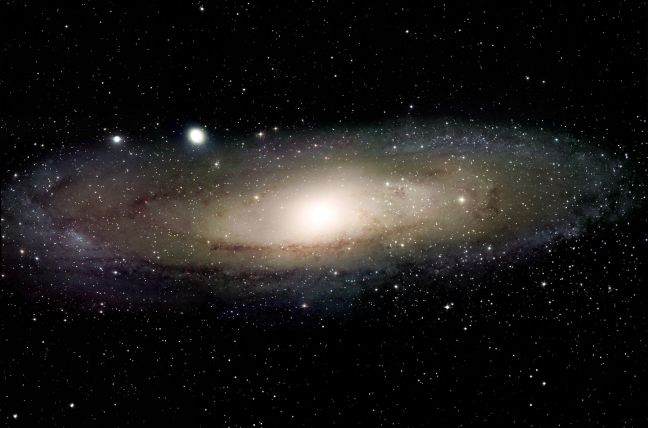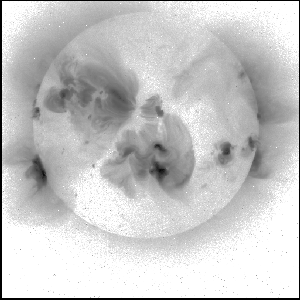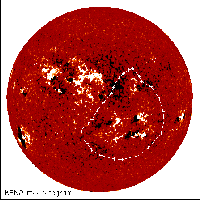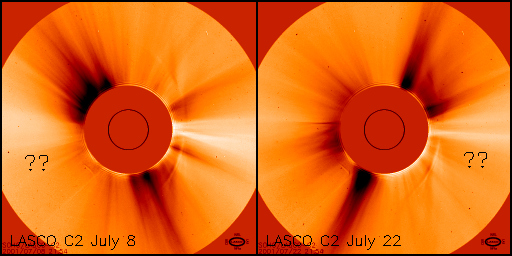
The romantic-sounding title echoes the astronomers' celebrated Shapley-Curtis debates regarding the nature of the nebulae - for a myriad of links and a full explanation, see the Astronomy Picture of Day on this topic - we just tease you below with their picture:

It is of course the Andromeda Nebula, M31, and it's an "island universe" in the sense that it's detached from our galaxy, the Milky Way.
The somewhat farfetched analogy here is suggested by the picture below, which shows an "island universe" of magnetism on the Sun, via soft X-rays:

It is an "island" because it's surrounded by coronal holes, much like an anemone active region (used to be called "rosette") as seen in soft X-rays. The image above, however, shows not just a single active region within the anemone, but a whole complex of them - like an island universe. For an image with a dotted line identifying the island, click here.
Questions:
Answers to questions
The first thing we do is check up on the SW (lower right) part of the boundary, conjecturally a vast coronal hole but suspiciously bright in the image above. We take advantage of solar rotation:

At least qualitatively, this comparison answers both questions: the fuzzy part marked with a '?' of the boundary wasn't present on July 14, consistent with it being a coronal hole; we'd therefore interpret the fuzziness and cusp-like appearance in the middle and right-hand images as due to eruptions. The second question may then be answered "yes", conjecturally - how can there be an eruption, opening field lines into the heliosphere, without there being a streamer structure?
To check further on the idea of a giant coronal hole containing several active regions (the solar "island universe"), let's do an overlay on a Kitt Peak magnetogram:

And sure enough, this shows white (positive) magnetic polarity in the whole boundary region, and within it about five distinct bipolar flux concentrations. Note that the magnetogram is from July 16, whereas the boundary sketch was from July 15, but we've shifted the boundary line approximately to compensate for this.
Finally, let's check to see if this structure supported the base of a streamer. To do this, we look at LASCO coronal images from a week before and after July 15, to see if a streamer appeared at the right position:

Bingo! No streamers! Very interesting...
Conclusion
Taken at face value, what we have shown is that a solar magnetic structure embedded in a coronal hole does not necessarily form the base of a coronal streamer. This is rather surprising, since open field lines may well extend from active regions, as evidenced by Type III radio bursts. Do the active regions within this "island universe" show X-ray jets or Type III bursts? Interesting questions beget further interesting questions, but our time is up this week. Please stay tuned.